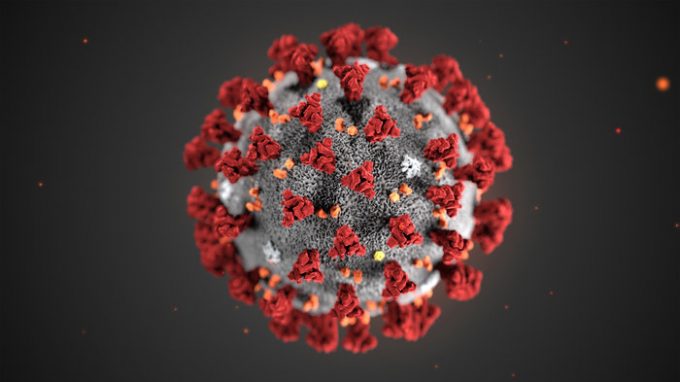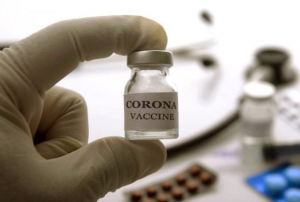Covid-19 pandemic update

The current status of a vaccine is explored along with the euphoric effects on market sentiment that the Covid-19 pandemic creates in its wake.
27 Covid-19 pandemic vaccines in clinical trials
There are about 120 groups working on a Covid-19 pandemic vaccine and 23 have vaccines in different stages of clinical testing. Early results make scientist expect that there will be one or more safe and reasonably effective vaccines.

“Effective” is a medical term and it does not mean what most people think it does. Every year, there is an effective flu vaccine. But in a good year, it prevents infection in only 70% of those vaccinated compared to those not vaccinated.
Think about it this way. Look at 1,000 people who get vaccinated and compare them to another 1,000 similar individuals who did not get vaccinated. Let’s say that 100 of the unvaccinated people get the flu this season and only 30 of the vaccinated people get the flu. That means that 70% of the vaccinated people who should have gotten sick avoided infection. The vaccine is therefore 70% effective.
A desperate world will settle for any safe and moderately effective vaccine
For Covid-19, everyone is desperate for a vaccine. Therefore, scientists will be satisfied with a vaccine that is less effective than what they normally would want. They hope that more effective vaccines will become available over the coming years. “Effective” might mean that only 50 – 60% of vaccinated people are protected from infection.
It is important to note that the protection is less in older or debilitated people whose ability to produce antibodies and T-cells is poor. A 70 year old man with medical problems might only have a 30% chance of avoiding infection compared to a similar person who was not vaccinated.
Unfortunately, this group is most in need of protection, but they are the least able to produce enough antibodies and T-cells. Scientists know this and that is one of the reasons why they are working on a treatment in addition to a vaccine.
Moderna’s phase 1 vaccine results
Moderna reported the results of its phase 1 test of its vaccine, named mRNA-1273, this week in the New England Journal of Medicine. They had 45 patients in the study, between 18 and 55 years old. Forty-two were available for a 2nd injection of the vaccine 28 days later. The first dose is the priming vaccine and the 2nd is the booster shot. Researchers use a booster shot when they think that one dose might be inadequate to generate the response that they think is needed

No patient had neutralizing antibodies in their blood prior to getting vaccinated. All had them after vaccination, and the average patient had blood levels that were about twice those of patients who recovered from a Covid-19 infection (SARS-CoV-2).
There are many types of antibodies. Neutralizing antibodies are the type that bind to the virus in the blood stream and prevent it from entering cells. This prevents the virus from entering and destroying cells.
Therefore, if a patient has enough of them, the patient will not have symptoms. He will not get sick. The body will then destroy those neutralized antibodies over the next couple weeks and the patient will no longer be infected and he will not be contagious.
It is very important to note that no patient developed a permanent, serious side-effect from the vaccine. Many patients had symptoms, most commonly fatigue, chills, headache, or muscle pain. Some were severe, but all were temporary.
Moderna’s phase 2 is underway and phase 3 begins on July 27
Moderna began its phase 2 trial on May 29. Phase 2 is for people for whom the vaccine is ultimately intended. It involves 600 healthy participants divided into two groups. One is between 18 and 55 years old and the other 55 and above.
Phase 3 will begin on July 27 and there will be 30,000 participants at 87 locations across the United States. It includes patients who are at high risk of getting infected.
Remember, phase 1 only had 45 patients. It therefore would likely not see a serious complication that happens in only one in a thousand patients. Phase 3 should find most or all of the serious problems.
In phase 3, some patients will receive two doses of 100 micro grams of the vaccine. Other patients will receive a placebo for both doses. Researchers will follow the participants for 2 years to see how many patients in each group ultimately got Covid-19. This will tell them how much benefit there is to getting vaccinated compared to not getting vaccinated (the placebo group). It should also uncover most or all significant side effects.
Buy the rumor, sell the news
Who does not believe that there will be a Covid-19 pandemic vaccine in 2021? Therefore, this is already priced into the market.

Those expecting a breakout far above the old high because of a vaccine do not understand how markets work. The market is excellent at anticipating (discounting or pricing in) news. This means that before the news confirms the everyone’s belief, the market goes to where traders think it should be if the news turns out to be as expected.
There is often a brief, strong rally on the actual news, but if the news was totally priced in, the rally typically fails. You often hear the expression “buy the rumor and sell the news.” This is an example. Traders buy before the news comes out because they know that the news is good for the economy.
Everybody will be happy, relieved, and excited once the news comes out. This often results in one last sharp euphoric rally on the news. But since the market already priced the news in before it was announced, that final rally goes beyond what is the appropriate price.
Many traders take profits on that euphoric burst. They expected a buy climax. They also believed the market would reverse down to what they thought was a fair price before the anticipated news was released.


Al, when you wrote that “…no patient developed a permanent, serious side-effect…” I’m assuming you mean from the vaccine trial.
I have read from several sources that survivors of the virus are often left with permanent heart and other organ damage even after recovering. Can you comment on the validity of these claims and the potential risks of permanent organ damage from a vaccine, please?
Yes, and I just edited that sentence to make it clear.
You are alluding to one of the under-reported stories in this pandemic. That is that maybe 5 – 10% of patients have permanent vital organ damage. The exact number will not be know for decades.
For example, if a person loses 20% of his lung capacity from an infection today, he will feel perfectly normal once the infection passes. But if he loses 50% more of that capacity from some other illness 40 years from now, he will be left with 30% instead of 50%, and that could kill him. The same is true for permanent heart, kidney, and brain damage.
Decades from now, I am confident that there will be studies of all kinds of illnesses that will show that people who got Covid-19 in 2020 did worse or died more often than those who did not.
Yes, 140,000 people have died in the U.S., but I bet maybe a million will have serious debilitating problems later in life because our government did not do enough to protect them in 2020. There is a lot more suffering ahead because of our stupidity today.
Thank you very much Al.
Can you comment on the theory that a portion of the population has some degree of immunity (so-called dark matter) due to exposure to previous corona virus infections.
I think the general consensus is that immunity to coronavirus infections, like the common cold, is only protective for a few months. Once the lymphocytes that make antibodies learn how to make them against a pathogen, they are quicker to make them if they see that pathogen again.
Also, a coronavirus is called “corona” because of the spikes on its surface. The virus looks like a crown in a picture.
All coronaviruses have them. While there might be some antibodies that can neutralize the virus by some way other than binding to the spikes, most scientist believe that neutralizing antibodies have to attack those spikes to neutralize the virus (prevent it from entering cells).
Since all of the coronaviruses have spikes, it makes sense that an immunity to one would mean at least a partial immunity to all.
But the fundamental problem is that the body does not continue to make those antibodies at a protective level after a few months. This is unlike many with other viruses, like measles and polio. The body continues to make enough antibodies for life to prevent infection.
That is going to be the concern with any coronavirus vaccine. Will the protection last a year? If so, then we get a combined flu and corona shot every fall. Or, will the protection go away after 4 – 6 months?
The more often we need booster shots, the fewer people will get them. That means that there would be a floor to the number of Covid-19 cases. It could be around killing people for decades.
One corollary to the above is that an effective vaccine will probably still be effective against mutations. This is because the antibodies go after the spikes and a mutated coronavirus will probably have very similar spikes to the current virus.
As a Dr, I was curious if you get the yearly flu shot and would you be getting the new Covid vaccine when it arrives? Thanks for all the knowledge you share with us.
Yes, I get an annual flu shot, although it is typically only about 60% effective at stopping the flu. At my age, it is probably less because our immune systems are weaker with age.
I definitely will get the Covid vaccine. If I am allowed to, I will get more than one type because the mechanism of action is different for different vaccines.
I wrote about this a month or two ago. My hope is that the chance of developing immunity will go up if I get more than one type of vaccine.
For example, the Oxford vaccine uses an adenovirus to deliver the antigen (a viral vector approach), unlike the Moderna vaccine, which I believe is an RNA type of vaccine.
This gives an overall description of the types of vaccines:
https://www.nature.com/articles/d41586-020-01221-y